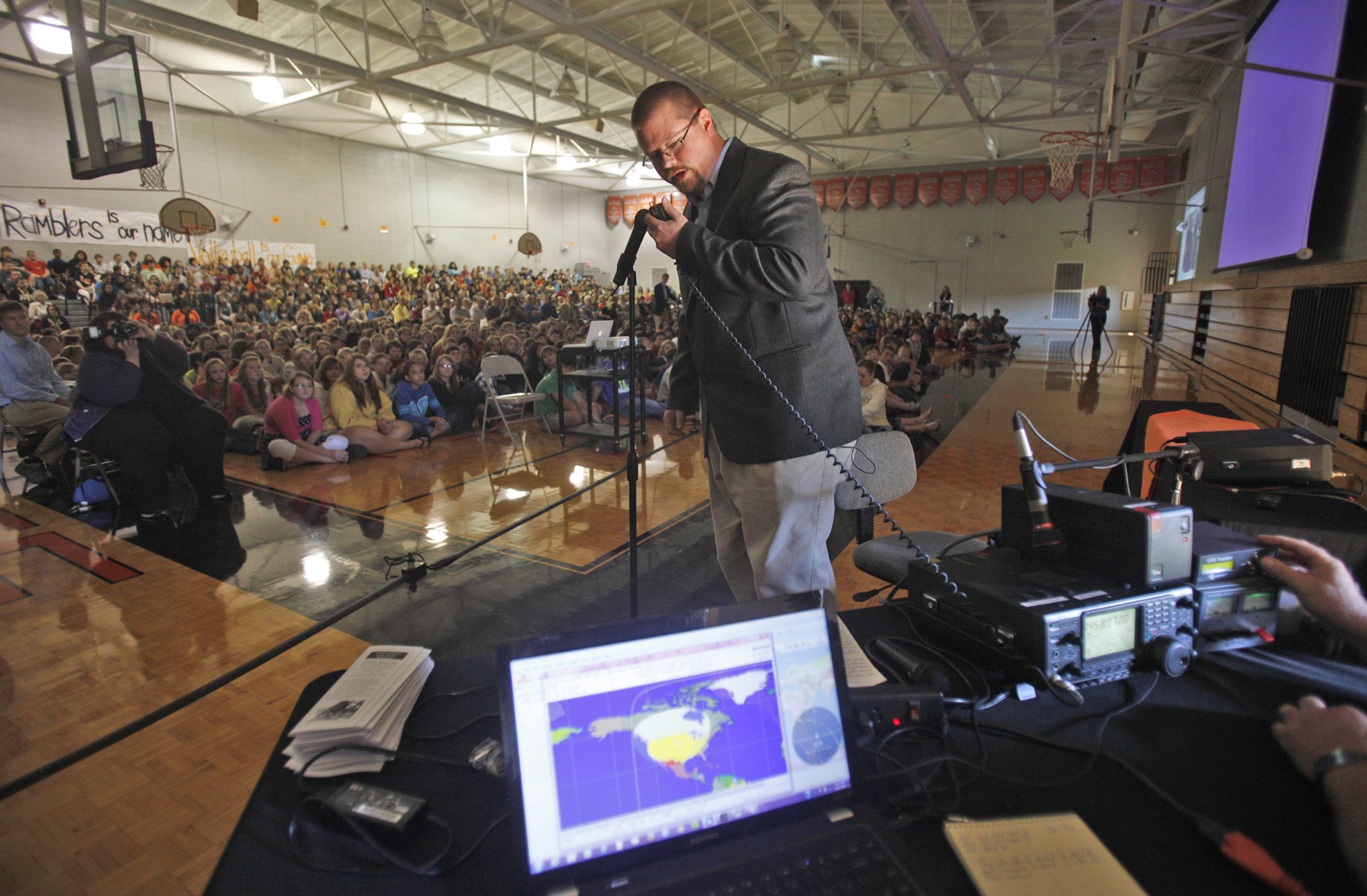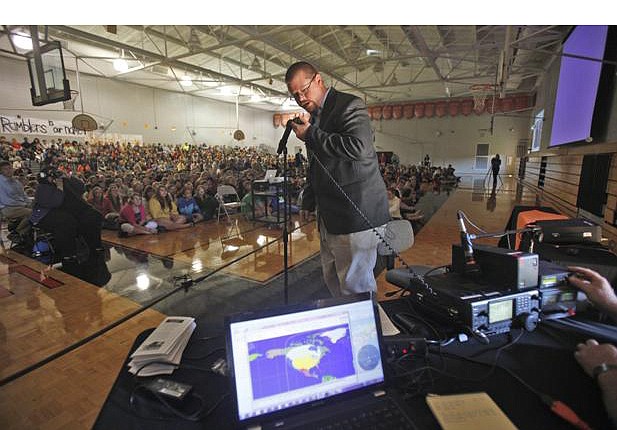Reaching for the stars: Students use ham radio to talk to space station (with video)
Friday, January 1, 1904
 Teacher Jody Carter tries to make contact with the International Space Station while a gymnasium full of students and guests listen Friday. LaFayette Middle School students spoke with astronauts onboard the International Space Station on Friday morning as the station flew over the region. The event was organized by the Rambler Radio Club, the school's amateur radio operation organization, and was executed using donated equipment.
Teacher Jody Carter tries to make contact with the International Space Station while a gymnasium full of students and guests listen Friday. LaFayette Middle School students spoke with astronauts onboard the International Space Station on Friday morning as the station flew over the region. The event was organized by the Rambler Radio Club, the school's amateur radio operation organization, and was executed using donated equipment.LaFAYETTE, Ga. - When Jody Carter was 8 years old, his father tried unsuccessfully to contact the space shuttle via ham radio.
Thirty years later, the second time was the charm.
Just after 11 a.m. Friday, Carter, who's now a math and science teacher at LaFayette Middle School, radioed Sunita "Suni" Williams, commander of the International Space Station.
"Can you read me, over?" Carter asked as some 900 sixth-, seventh- and eighth-grade students sat in bleachers and cross-legged on the school gymnasium floor. LaFayette elected officials and other VIPs sat amidst the students in folding chairs.
After some static and initial garbled words, Williams came through loud and clear and answered questions asked by students in the Rambler Radio Club, an after-school club that Carter leads.
Questions included: How do astronauts cook food? "All we do is heat it up," Williams said. What hours do you keep on the space station? "We wake up at 6 and go to bed at 10," she replied. How do astronauts do laundry? "We wear our clothes for a week or so," Williams said. What could she see as the ship flew 220 miles above the Earth? "I can see all the way up to the northern parts of Canada and the central parts of South America."
Carter and his student ham radio operators spent 10 months preparing for the 10-minute conversation.
They were ecstatic afterward.
"Today, LaFayette Middle School - we had connection," Carter said once the space station, which travels at 17,200 miles per hour, sped out of range.
The gymnasium full of kids roared in approval, applauded and high-fived one another.
"Our [school] theme for the year is 'get connected,'" Carter explained afterward. "The sky's no longer the limit."
Carter hopes the event inspires students to push their limits and consider a career in science, citing as inspiration two former Walker County students, Bill Cooke and Rob Suggs, who now work for NASA.
One of the radio club members who spoke with Williams was Jody Carter's son, Josh, an eighth-grader at Gordon Lee Middle School.
"I've always wanted to talk to someone in space and see what it was like," he said.
Another was Nate Espy, a home-schooled seventh-grader who was inspired to get his own ham radio.
"It's a great experience," he said. "I talked last week to Cape Coral, Fla."
Ham radio operator John Kludt, of Atlanta, took a day off work so he could loan the school a motorized device that tracked the space station as it arced overhead and kept the school radio's antenna pointed toward it.
"It's always really fun," said Kludt, who's helped another school contact the space station. "That's the fun of doing it, the kids just really seem to enjoy it."

